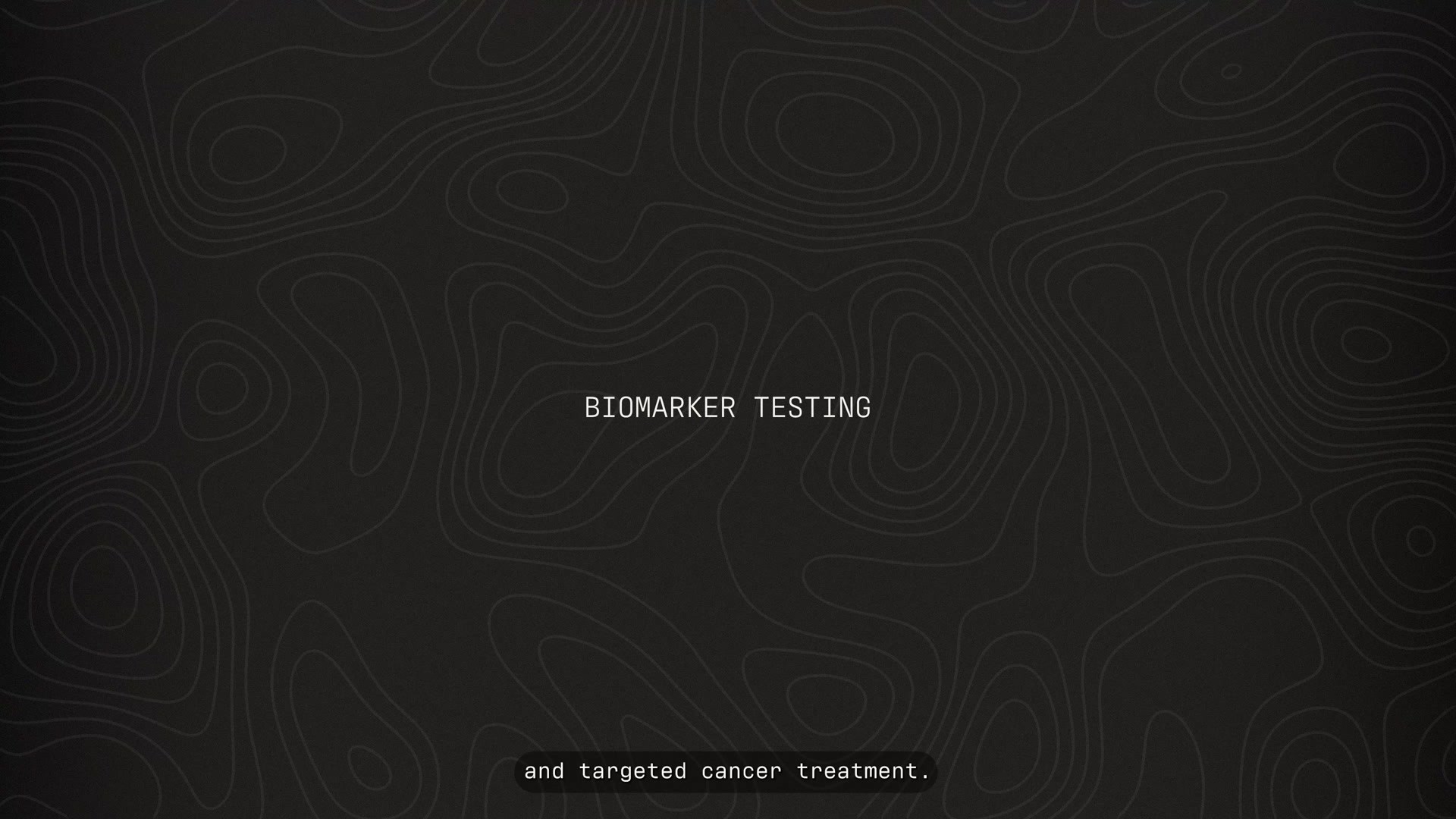Cannes Lions
Mapping the Tumor 2.0
HAVAS LYNX, Manchester / ASTRAZENECA AND MERCK / 2024
Awards:

Overview
Entries
Credits
OVERVIEW
Background
Selecting the specific treatment for the genetics of a patient’s cancer saves lives, but almost half of US oncologists weren’t using biomarkers with new patients.
By 2022, 70% of clinical trials incorporated biomarkers to inform treatments, compared to 25% in 2005. We can now test patients to help decide what is "the right drug, for the right patient, at the right time”. This is called precision medicine.
By using a biomarker to find the right patients, they can live without disease for an average of 2.5 years.
However, 52% of oncologists still don’t fully utilise biomarker testing with new patients.
Our objective was to increase the belief in oncologist’s that early, comprehensive biomarker testing is an essential part of their toolkit, and fundamentally change their approach to treatment.
But these lifesaving messages were being lost in a deluge of other important information.
Idea
Oncologists were disengaged and losing sense of why we use biomarker testing, relying on what they knew instead of seeking out new targetable biomarkers.
We helped them navigate through information overload by using a striking visual metaphor to better educate HCPs and encourage behavior change.
Like natural landscapes, tumors have unique profiles and characteristics which help define them.
Working with medical and scientific professionals, we crafted three distinct tumor maps for breast, prostate and ovarian. Key cancers for AstraZeneca that required testing for various biomarkers.
Each biological feature was reflected in the geographical ones that closely represented them. Genetic mutations were fault lines, as they form disruptions that effect the landscape. River deltas represented hormone receptors, feeding the landscape.
Strategy
We took the overwhelming amount of data behind precision medicine and early biomarker testing and distilled it down to the clarity of a single metaphor.
Our goal? To remind oncologists how biomarker awareness and testing can simply place the patient on a better path.
Precision medicine personalizes treatment for patients with key genomic biomarkers, greatly improving their outcomes. Oncologists focus on trying to keep up to date on every advancement but overlook the simple knowledge of biomarker testing.
This means many eligible patients go untested and unidentified every year.
In breast cancer, 13,103 (44%) of eligible patients are missed every year.
In ovarian cancer, 5,322 (54%) of eligible patients are missed every year.
In prostate cancer, 19,893 (46%) of eligible patients are missed every year.
These overlooked patients missed a combined 230,650 months of better life that precision medicine could have provided them.
Execution
Working with medical and scientific professionals, we crafted three distinct tumor maps for breast, prostate and ovarian. Key cancers for AstraZeneca that required testing for various biomarkers.
To launch the campaign, we worked with OncLive (a 3rd party website used by almost all of our targets) to host an interactive, educational resource via their homepage. It featured the Mapping the Tumor metaphor, included long-form education, printable summaries, patient conversation aids, and test-yourself case studies to expand the learning experience.
This unique creative approach was part of a multichannel campaign that raised awareness and attracted our audience in a way they hadn’t seen before. This included congress activation, organic & paid social and newsletters.
Outcome
As a result of the campaign, 22,607 patients were identified through biomarkers as being treatable through life saving precision medicine
Impact was measured through change in testing rates of key biomarkers across breast, ovarian and prostate cancer.
Supported by strong campaign metrics:
11.63% email CTR (5x benchmark)
41% congress attendees engaged with the booth (industry benchmark 15%)
700+ downloads of supporting education.
In 3 months, 5,363 oncologists engaged with the microsite - responsible for half of new patients.
3x faster than previous campaigns with traditional approaches.
We contributed to a 25% absolute increase in “intention to test for key biomarkers to inform treatment in the future”.
In testing there was an increase of 41% and a significant reduction in testing gap - identifying 22,607 more patients with treatable biomarkers.
Resulting in the potential of a staggering 7,881 years of life preserved.
Similar Campaigns
1 items
